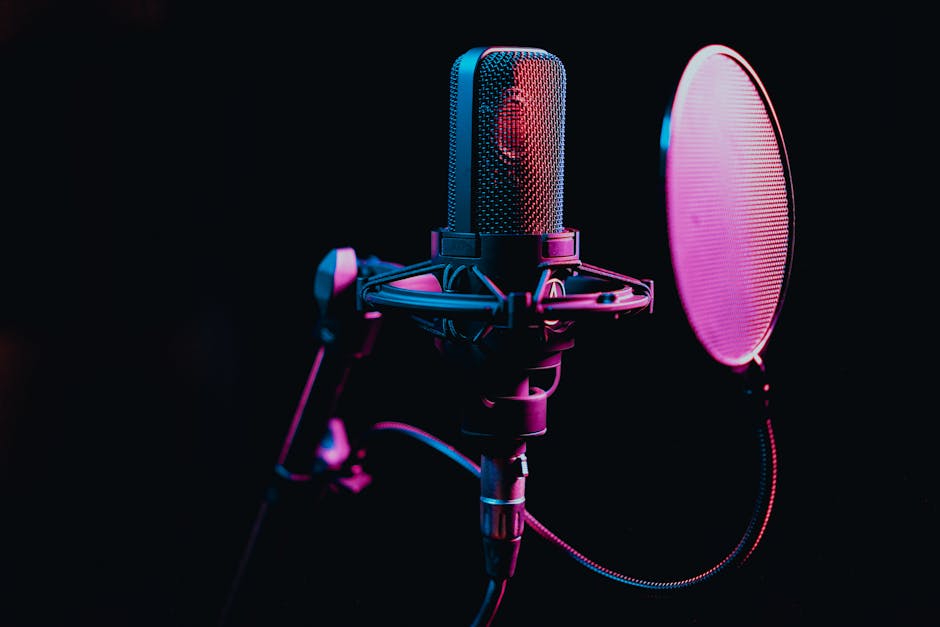My Experience with Using a Digital Audio Workstation (daw) for Podcasting.
When I first dipped my toes into the world of podcasting, my enthusiasm was high, but my technical know-how was, shall we say, a little underdeveloped. Like many beginners, I started with basic recording tools and a prayer. My raw audio was often a chaotic symphony of uneven levels, background hums, and awkward pauses. I knew there had to be a better way to polish my sound, to make my voice truly shine, and to deliver a listening experience that matched the quality of my content. That’s when I embarked on what would become a transformative journey: learning to wield a Digital Audio Workstation, or DAW, for my podcast. This isn’t just a technical guide; it’s a personal chronicle of how a piece of software became an indispensable partner in my podcasting adventure.
My First Encounter with the Digital Audio Workstation: A Leap of Faith for My Podcast
The term “Digital Audio Workstation” sounded intimidating, like something reserved for professional music producers or sound engineers. My initial thought was, “Do I *really* need something this complex for a podcast?” But after hearing the stark difference between my unedited recordings and some of my favorite podcasts, I knew the answer was a resounding yes. I wanted that crisp, clear, professional sound, and I realized a DAW was the gateway.
Choosing My Co-Pilot: Selecting a DAW for My Podcasting Needs
My first step was research, which quickly felt like navigating a dense forest of options. There was Audacity, often recommended for beginners and free, which I had tinkered with briefly. Then there were the more robust, professional-grade options like Adobe Audition, Logic Pro X (for Mac users), Pro Tools, and Reaper. I weighed cost, learning curve, and community support heavily. I started with Audacity for simple cuts, but quickly felt its limitations for more advanced processing. Eventually, after much deliberation and watching countless YouTube tutorials, I settled on Adobe Audition. Its integration with other Adobe Creative Cloud apps was a plus, and its interface, while initially daunting, seemed logical once I started. It felt like a significant investment, both in terms of money and time, but I viewed it as an investment in the future quality of my podcast.
The Initial Overwhelm: Deciphering the Multitrack Interface
Opening my chosen DAW for the first time felt like being dropped into the cockpit of a spaceship without a flight manual. Tracks, waveforms, meters, effects racks, transport controls – it was a sea of buttons and sliders. My early attempts were clumsy. I remember spending an hour just trying to figure out how to import my audio files correctly and then another 30 minutes to simply cut out a cough. The concept of multitrack editing, where separate audio sources (my voice, an intro music track, sound effects) exist on different layers, was a revelation but also a source of confusion. I’d accidentally mute tracks, delete wrong sections, and apply effects globally when I only wanted them on a single clip. Patience, persistence, and a healthy dose of online tutorials became my best friends during this steep learning curve. The key, I found, was to focus on one task at a time and truly understand its function before moving on.
Unlocking the Art of Sound: How My DAW Transformed Raw Audio into Engaging Episodes
Once I moved past the initial intimidation, the DAW began to reveal its true power. It wasn’t just a cutting tool; it was a sculptor’s chisel for sound. This is where my podcast truly started to find its voice, not just in content, but in sonic identity.
Beyond Basic Trims: My Revelation in Editing and Arrangement
My podcasting journey began with simple “cut and paste” editing. If I stumbled, I’d pause, restart the sentence, and then manually snip out the bad take. With a DAW, this process became incredibly fluid. I could easily remove filler words, tighten pauses, and rearrange segments without destructive edits. The ability to zoom in on waveforms allowed for surgical precision, removing mouth clicks or subtle background noises that I wouldn’t have even noticed before. What truly revolutionized my workflow was understanding how to use crossfades to smooth out edits, making transitions seamless and imperceptible to the listener. This wasn’t just about making my podcast sound cleaner; it was about making it flow more naturally, enhancing the listener’s immersion.

The Magic of Plugins: My Go-To Tools for Polishing Vocal Tracks
The real “aha!” moment came when I started exploring plugins. These are like specialized tools within the DAW that perform specific audio tasks. My first dive was into noise reduction. My recording space wasn’t perfectly treated, and a subtle fan hum or street noise would often creep in. Learning to use a noise reduction plugin, even subtly, made an immediate and dramatic difference. Suddenly, my voice stood out against a quiet background. Next came equalization (EQ). I learned how to use EQ to boost frequencies that added warmth to my voice and cut those that made it sound muddy or harsh. This wasn’t about making my voice sound different, but about making it sound like the best version of itself. Then came compression – a concept that took me a while to grasp but proved invaluable. Compression helped level out the dynamic range of my voice, making my quietest words audible and my loudest words not overpower the listener. This meant no more frantic volume adjustments for my audience. These three plugins – noise reduction, EQ, and compression – became my foundational toolkit for vocal processing, transforming my raw microphone feed into broadcast-ready audio.
Building a Seamless Workflow: My DAW as the Heart of Podcast Production
Initially, using a DAW felt like a series of disconnected tasks. Over time, as my experience grew, it evolved into a cohesive, efficient workflow that dramatically cut down my post-production time and stress. My DAW wasn’t just a tool; it became the central hub of my podcasting operation.
Developing Templates and Presets: My Shortcuts to Consistency
One of the biggest breakthroughs in my personal workflow was creating templates. Instead of starting from scratch with every episode, I built a multitrack session template that included my standard intro and outro music tracks, a dedicated track for my voice, and another for sound effects or guest audio. Crucially, my voice track in this template already had my preferred noise reduction, EQ, and compression settings applied as effects. This meant that when I imported my raw vocal recording into the template, it instantly sounded 80% polished. This not only saved immense time but also ensured a consistent sound signature across all my episodes, something vital for brand recognition and listener comfort. I also created custom presets for specific sound effects or music elements, making them easy to drop in and blend seamlessly.
Tackling Audio Challenges: From Room Noise to Leveling Woes
My DAW became my problem-solving partner for common audio issues. I learned how to use its visual tools – spectrographs and amplitude statistics – to identify and mitigate persistent hums or unexpected clicks. For example, a low-frequency rumble from a nearby appliance became visible on the spectrograph, allowing me to precisely target and reduce it with an EQ filter. When guest audio came in at vastly different levels, the DAW’s normalization and gain adjustment tools allowed me to quickly bring everything into balance. I also experimented with gates to automatically silence the microphone when I wasn’t speaking, further reducing ambient noise. These advanced features, which felt like magic initially, became standard practice, allowing me to rescue recordings that I once would have considered unusable. This resilience in tackling audio challenges significantly boosted my confidence and expanded the possibilities for my podcast.




Post Comment